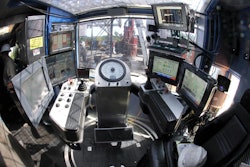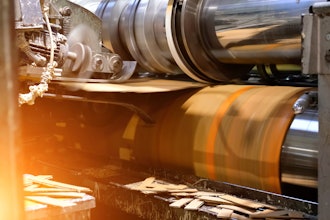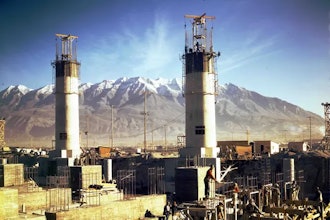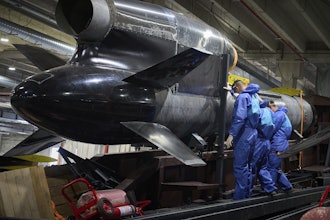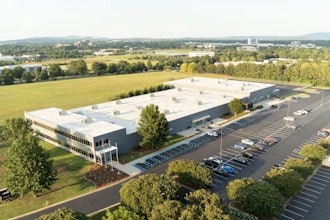Expert Advice on Flexible
and Inexpensive Approaches
to Adding Capacity
Expert Advice on Flexible and Inexpensive Approaches to Adding Capacity
An upturn in the economy has brought a welcome increase in manufacturing demand. And
while optimistic about the future of the manufacturing industry, many companies are exercising
caution when it comes to expansion. This prudent attitude has prompted many to ask: How
can I grow capacity without adding floor space, equipment or personnel? IQMS has been
collaborating with its customers to solve this familiar question for years and recently had the
opportunity to discuss this issue with industry expert, Cindy Jutras, president of research and
advisory firm, Mint Jutras.
IQMS: There are two common routes manufacturers can take when faced with a surge in
demand. The first is to maintain status quo with current business processes and operations,
while adding new work centers, employees and square footage to handle the increase. The
alternate route is to ramp up all existing resources as efficiently as possible first, prior to
expanding.
Cindy: Well you certainly can’t do it through management by walking around. You need
the right software and technology. Manufacturing has benefited tremendously from plant
automation. Now we need to bring the same level of automation to managing and scheduling
the manufacturing process. For that you need a comprehensive Enterprise Resource Planning
(ERP) system suited to manufacturing and a Manufacturing Execution System (MES). Preferably
those two solutions are tightly integrated.
IQMS: We completely agree. We call that type of ERP solution “comprehensive” and we have
found that there are not a lot of end-to-end ERP solutions like ours on the market today.
Cindy: Right. Not every ERP solution has what it takes to meet the needs of manufacturing,
and not every ERP solution vendor also offers an embedded MES. While integration of third-
party programs into a core ERP system can work, it is fraught with challenges such as duplicate
data and data entry, information delays and silos, interface issues and customization expense.
The key to increasing capacity is to have an end-to-end solution that covers every aspect of
your business, from ERP to MES, material requirements planning (MRP), financials, order
management, warehouse management (WMS), customer relationship management (CRM) and
more. An end-to-end, fully integrated solution is what makes every aspect of your business
transparent, traceable and efficient.
Where Can I Experience the Greatest Capacity Increase First?
IQMS: So if you are looking to add capacity without adding more people, equipment, work
centers or facilities, where would you recommend a manufacturer start?
Expert Advice on Flexible and Inexpensive Approaches
to Adding Capacity
Expert Advice on Flexible and Inexpensive Approaches to Adding Capacity
Cindy: A lot depends on where you are today. My (survey-based) research indicates there
are a lot of incomplete software solutions installed in manufacturing plants today. The very
first question in our Enterprise Solution Study this year asked how the respondent would
characterize the software that runs their business. We later asked which software package they
were using. Some of these solutions are marketed as “ERP” and others simply as accounting
solutions. We split the responses based on that in the figure below and found that less than
half of those that actually bought an ERP solution are even using it as a fully integrated suite
of modules that provides the system of record of their business, which happens to be my
definition of ERP.
And making matters worse, many of them are based on outdated technology and lack the full
functionality we’re talking about here. If you are not running your operations on a modern,
technology-enabled, fully functional ERP solution, you are probably feeling the pain of
inefficiencies and you are not optimizing your business. If you think things aren’t that bad, you
are probably fooling yourself and falling into the trap of complacency. Before you can take full
advantage of the capacity you have, you need to fix that.
My data shows that the average increase in production output after implementing a
comprehensive ERP is 9 percent. A “World Class” ERP implementation increases production
output by an average of 19 percent. And this is not at the expense of rising inventory levels.
Inventory value, obsolete inventory and cycle times also shrink (see next page). There is
generally some low hanging fruit to be harvested just from automating the material planning
and scheduling processes. But this doesn’t necessarily lead to 100 percent utilization and an
increase in capacity.
31%
Full integrated suite of
modules for full system
of record (ERP)
0%
20%
40%
60%
47%
25%
44%
23%
28%
ERP
Expert Advice on Flexible and Inexpensive Approaches to Adding Capacity
IQMS: So let’s say you do have a comprehensive
ERP and MES solution, and also some level of plant
automation. Where is your most immediate ROI?
For our manufacturers, it is often found in the
process monitoring package within our ERP.
Cindy: Well the most immediate ROI would
definitely be sitting on your shop floor, where the
capacity is actually consumed. With a process
monitoring module that allows you to link directly
to work centers and high value production
equipment through programmable logic controllers
(PLCs) and sensors to collect process data and
compare against set thresholds and parameters,
you are able see in real time how you are
performing and producing.
Are you meeting requirements for quality and
specifications? If not, you can immediately shut down processes in real time, before you waste
capacity making product that will require scrap or rework.
And are you meeting production standards? Exceeding them? Over a very short period of
time this can lead to refinement of these standards and far more accurate schedules. But in
order for this process monitoring to translate to increased capacity, you need to relay that data
immediately to your ERP solution for analysis. You need to make your ERP solution an active
participant in the manufacturing process. Unfortunately, it is not safe to assume that every ERP
solution has a process monitoring module, which is why I recommend the comprehensive ERP
solution we discussed above.
World Class ERP Performance
Mint Jutras defines World Class in the
context of an ERP implementation. We
use a composite metric that includes:
aActual measured results experienced
since implementation
aProgress made in achieving company
specific goals
aCurrent performance in selected KPIs
The top 20% of survey respondents
comprise “World Class.” The remaining
80% are referenced as “All Others.”
18%
0%
5%
10%
15%
20%
Admin
Costs
Inventory
Costs
Obsolete
Inventory
Cycle Time
17% 17% 16%
19%
5%
7% 8% 8%
9%
World Class All Other
Expert Advice on Flexible and Inexpensive Approaches to Adding Capacity
With process monitoring you can:
IQMS: Our customers say that you can’t hide from
real-time process monitoring! It always exposes the
truth about what is actually happening on your shop
floor as it occurs.
Let’s explore the value of this increased
transparency a little further. Not only can process
monitoring collect and store this data in real time,
but it also allows manufacturers to monitor the
processes remotely. What implications do you see
this having on capacity?
Cindy: Well the most obvious impact is on the
staff needed to watch over automated operations.
Given the skills shortage many manufacturers are
experiencing today, this is a significant benefit that
should not be overlooked. With process monitoring
solutions, typically you don’t need to physically have
dedicated eyes on the process at all times. Nobody
likes the idea of eliminating jobs, but if you are
hoping to increase capacity, everybody likes the idea
of doing that without having to increase staffing
levels or having to replace skilled Baby Boomers
as they retire. Where one operator per machine
might have been required before, by implementing
process monitoring, you might be able to have
a single operator overseeing the production on
several machines.
IQMS: Yes, we know of one successful manufacturer
that uses our process monitoring module to run
its work centers in cells, with six machines to each
cell. Rather than have six operators, one for each
machine, the manufacturer uses the software to
employ only one skilled worker to supervise all six of the machines in each cell. With automatic
alerts that tell him if the job is having difficulty or parts are trending out of specification, the
traditional model of one operator per work center is no longer required.
But, what about creating a second (or third) shift if demand continues to increase? Without
• Collect every important variable
that relates to production:
Temperature, pressure,
dimensions, weight, thickness,
fill rate and more
• Utilize this data in real time to
ensure part quality and avoid
unscheduled downtime
• Catch and respond to rejects
and parts trending out of
specification as they occur, not
hours later when you receive
a production report or batch
upload
• Use that collected to data auto-
populate statistical process
control (SPC) tools for accurate
analysis and improved decision
making – even better if SPC is a
module of your ERP solution
• Track whether a job is running
too fast or too slow, then review
your standards and adjust your
upcoming jobs on the schedule
accordingly
• Increase accountability
throughout the organization.
Unscheduled downtime,
employee labor, parts produced
and more are fully tracked as
they are occurring
Expert Advice on Flexible and Inexpensive Approaches to Adding Capacity
an automated tracking and monitoring system,
an additional shift is very likely to suffer from
a shortage of senior staff members. You can
either have fewer eyes on the floor or have less
experienced employees working the shift. Neither is
ideal. But with automated tracking and monitoring,
you can be more comfortable adding more hours
with the same number of supervisory employees.
Cindy: I would agree in principle, but for this to be
sustainable, the manufacturing processes being
monitored have to be very stable and someone
needs to be on call to deal with a problem as it
arises. Supervisors either need to be passively
monitoring from afar, or be alerted when something
goes wrong. This will only be sustainable if this
monitoring is not too intrusive. To be less invasive
(into their personal lives), this will require some
modern technology including:
• A web-enabled interface to the process monitoring solution itself or a series of
dashboards layered on top. Fortunately, according to my research, the majority (87
percent) of ERP solutions in place today have either some or all functions web-enabled.
• Alerts delivered automatically to mobile devices. These on-call supervisors can’t be tied
to a laptop during their off hours. Unfortunately, only 29 percent of manufacturers today
are able to get alerts on mobile devices that are automatically generated. Another 22
percent can receive these alerts that are manually generated, but this does little for you
unless you have staff on site to create and send those alerts.
IQMS: We have come to the same conclusions, Cindy, and our manufacturers rely heavily on
our mobile applications and activity monitoring alerts to accomplish what you suggest above.
Other Areas in the Software That Increase Capacity to Meet Increased Demand:
IQMS: After process monitoring, what are some other tools do you recommend for increasing
capacity? The first that comes to our mind is finite scheduling.
Cindy: Agreed. Traditionally shop orders are suggested and released from MRP, which assumes
infinite capacity. Work centers and machines that are over-scheduled are dealt with on an
exception basis. When this happens on a regular basis, which often happens when companies
One successful manufacturer in
Germantown, Wisconsin uses its
process monitoring module to run a
completely lights out manufacturing
facility 24/7. From the central material
handling system to the automated
box conveyor system, all parts are
run without human interaction. This
lights out facility is only achievable
with a comprehensive ERP system
that allows the manufacturing staff to
monitor and schedule all production
from an off-site facility. Thanks to
automatic alerts customized to trigger
when certain parameters are not met,
the employees know immediately if
something is wrong.
Expert Advice on Flexible and Inexpensive Approaches to Adding Capacity
shift into growth mode, planners and schedulers start to pad schedules, which sends utilization
heading in the wrong direction. Schedules created based on actual capacity will of course be far
more accurate.
Also look for tools that automatically analyze which operators and work centers are the most
efficient in order to answer the question: Of all your tools, people and machines, which ones
run the best for this particular job? Adding this level of intelligence to the dispatch process
allows you to “smart load” your work centers based on historical performance data, ensuring
that you are optimally using your assets.
IQMS: We don’t just recommend running on the most optimal equipment, but also running the
most optimal order size.
Cindy: Yes, of course the concept behind MRP is to create orders to match actual and forecasted
demand, but today MRP should also be able to create ideal production order batch quantities
through minimum and maximum run sizes, designated multiples and time fences to eliminate
unnecessary teardowns and resets. The goal is to optimize production runs without forcing you
to carry excess finished or semi-finished goods inventory.
IQMS: Now that you have raised the issue of inventory, we have found that in order to ensure
that you have the right components and materials “just in time,” you need process-specific
functionality built into your Bills of Materials (BOMs). Generic BOMs just don’t cut it when
maximizing efficiency and accuracy.
Cindy: Well certainly you have to be able to specify
where in the manufacturing process the materials are
consumed. ERP solutions need to link the components
in a BOM to a step in the routing. Accurate, process-
specific BOMs allow the automated schedulers to do
their jobs correctly, delivering the right material to the
right work center, just as it is needed. This is a feature
that has been around for years, but if you are evaluating
solutions, don’t simply assume it exists. For years, MRP
solutions handled this with an approximation of component offset lead-time. We can achieve a
much higher level of accuracy today with materials linked directly to the point of consumption.
You don’t want to be wasting capacity waiting for materials nor do you want to inflate inventory.
Also make sure the BOMs and routings and your solution in general support your production
methodologies. Gone are the days when all production was managed through discrete work
“Of all your tools,
people and machines,
which ones run the best
for this particular job?”
Expert Advice on Flexible and Inexpensive Approaches to Adding Capacity
orders. In fact our research finds a broad mix of production methodologies in place today,
including continuous processing, pull-based repetitive build schedules, discrete or batch work
orders, project-based orders or any combination of the above. The BOM structures in some
manufacturing ERP solutions work great if you make widgets using discrete work orders, but
not so great when you produce by weight, length or pieces or through continuous or batch
production.
IQMS: Multi-level BOMs with routings have always been a strength at IQMS, with routings that
go beyond the usual setup and run times. By displaying equipment and labor requirements and
allowing the flexibility to schedule processes that are work center, assembly line, application
based or a combination of many types, our manufacturers are able to diversify their operations
as needed to remain competitive.
Managing Changes
IQMS: In real life, change is simply a fact. A common cause of job resets and rescheduling of
production orders occur because of delays in communicating the change in an order to the shop
floor. How does change impact utilization, and in turn, available capacity?
Cindy: The secret to success here is in automating and digitizing that communication. Electronic
Data Interchange (EDI) has become an almost universal means of communication. Through EDI,
you gain accurate, up-to-the-minute order accuracy.
IQMS: The key here is to use the EDI program that is native to your ERP solution. With
embedded EDI (rather than a third-party package), you automatically and immediately know
about the change. Did a change in deliverables, quantity or due dates just come in? Your ERP
solution can check for changes every hour or every
minute, automatically, based on your operational needs.
Changes that impact orders yet to be released can happen
automatically. Those that impact work in progress can
trigger alerts for exception management.
Dealing with Downtime
IQMS: Finally, in order to maximize and optimize capacity,
you would need to minimize downtime. How do you
typically see ERP and MES help here?
Cindy: Actually this brings us full circle back to the shop floor and process monitoring. First,
automatically gather usage data and track where the tool or equipment is used throughout
your shop floor. Then, set up automatic alerts that remind you of upcoming and pending
“Electronic Data
Interchange (EDI) has
become an almost
universal means of
communication”
Expert Advice on Flexible and Inexpensive Approaches to Adding Capacity
maintenance, generate work orders and schedule labor and materials for planned maintenance
when you have the parts and bandwidth to take the machine offline. This approach lets
ERP handle maintenance, repair and overhaul (MRO) parts the same way it handles direct
materials. With additional features such as repair documentation linked to the work order
and maintenance cost tracking and visibility, your ERP solution can help you avoid costly
unscheduled downtime and maximize equipment utilization.
Conclusion
A need to increase capacity is a good problem for any manufacturer to have. But rather than
investing in new personnel, machines and floor space to handle the boost, manufacturers
should first consider if automating their plants to 100 percent capacity isn’t a less expensive and
more flexible approach to adding capacity.
The key to truly maximizing your output is with a comprehensive ERP and MES solution. Only
with the ability to trace and track every aspect of your business from quote to invoice will a
manufacturer be able to achieve the competitive advantage they seek.
About Cindy:
Cindy Jutras is a widely recognized expert in analyzing the impact of enterprise applications
on business performance. Utilizing more than 40 years of corporate experience and specific
expertise in manufacturing, supply chain, customer service and business performance
management, Cindy has spent the past 9-plus years benchmarking the performance of software
solutions in the context of the business benefits of technology. In 2011, Cindy founded Mint
Jutras LLC (www.mintjutras.com), specializing in analyzing and communicating the business
value enterprise applications bring to the enterprise.
About IQMS:
For more than 25 years, IQMS has been designing and developing manufacturing ERP software
for the repetitive, process and discrete industries. Today, IQMS provides a comprehensive
real-time ERP software and MES solution to the automotive, medical, packaging, consumer
goods and other manufacturing markets. The innovative, extended single-database enterprise
software solution offers a scalable system designed to adeptly grow with the client and
complete business functionality, including accounting, quality control, supply chain, shop floor,
WMS, CRM and business. With offices across North America, Europe and Asia, IQMS serves
manufacturers around the world. For more information, please visit www.iqms.com.
Expert Advice on the most Flexible & Inexpensive Approaches to Expansion
An upturn in the economy has brought a welcome increase in manufacturing demand. And while optimistic about the future of the manufacturing industry, many companies are exercising caution when it comes to expansion. This prudent attitude has prompted many to ask: How can I grow capacity without adding floor space, equipment or personnel? IQMS has been collaborating with its customers to solve this familiar question for years and recently had the opportunity to discuss this issue with industry expert, Cindy Jutras, president of research and advisory firm, Mint Jutras.
Latest in Home





